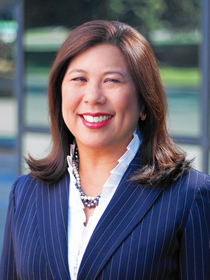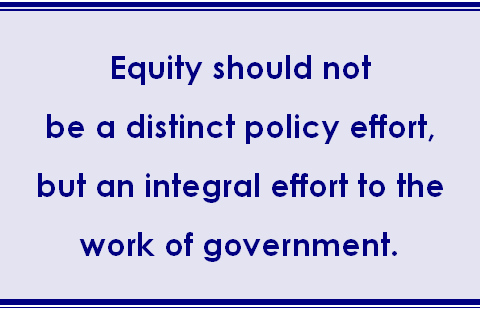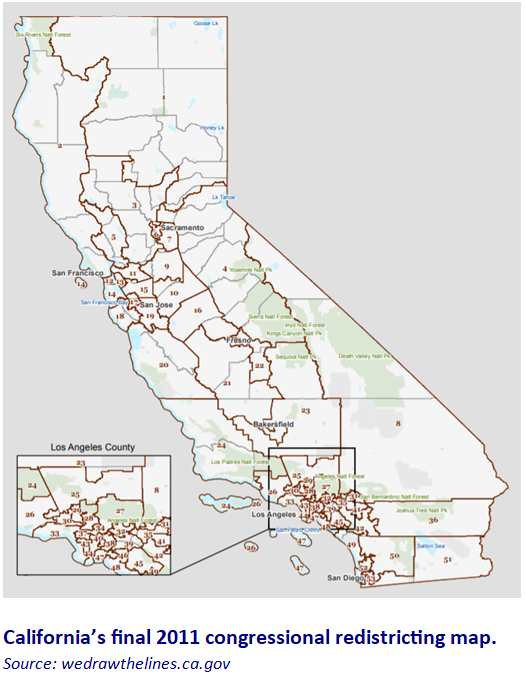You can also view this newsletter as a PDF.

Biden Administration Promotes Environmental Equity,
Spurring Further Efforts in California
Environmental harm is not evenly felt across society. It disproportionately affects communities already vulnerable due to historical injustice. It is incumbent on governments to recognize the role they play in exacerbating disparate outcomes, and to proactively address these disparities with intentional funding and policy. President Joe Biden’s Administration has taken important steps in this direction, which is spurring additional progress in California.
 Order to Secure Environmental Justice and Spur Economic Opportunity
Order to Secure Environmental Justice and Spur Economic Opportunity
Controller Yee applauds the Biden Administration’s commitment to environmental equity. On January 27, within weeks of taking office, the president issued the promising Executive Order on Tackling the Climate Crisis at Home and Beyond. A section to “Secure Environmental Justice and Spur Economic Opportunity” includes bold and thoughtful approaches to incorporating equity into the federal government’s environmental efforts. The order includes funding and mapping, formal structures, and changes to business operations.
California Context
While California leads the nation in efforts to address environmental inequities, federal policy changes can inspire California to make further progress. Controller Yee is a strong advocate of environmental equity in state policy. She has worked to develop a set of core equity principles with a group of stakeholders including environmental justice, mainstream environmental, and forward-thinking business organizations. The State Controller’s Office is sponsoring Assembly Bill 1099 (Rivas) to codify the principles for future environmental funding. With the current influx of state and federal funding, California leaders must ensure equity is at the forefront of government operations this year and beyond.
Justice40 Spending Commitment
The Biden executive order makes a commitment to target funding to the communities most in need. The Justice40 initiative sets a goal that 40 percent of all relevant federal investments flow to disadvantaged communities. The investments identified include: clean energy and energy efficiency, clean transit, affordable housing, training and workforce development, the remediation and reduction of legacy pollution, and the development of water infrastructure. This funding floor is a critical step for supporting frontline communities facing climate change and other environmental damage.
Importantly, the executive order also lays out a process for identifying disadvantaged communities across the country. The order mandates the creation of a Climate and Economic Justice Screening Tool within six months of the January order. California’s leadership in mapping environmental justice with our CalEnviroScreen maps will inform this federal tool. Federal legislation to replicate this work nationwide has been introduced as the Environmental Justice Mapping and Data Collection Act of 2021 (S 101, HR 516).
 Formal Government Structures
Formal Government Structures
The order also creates formal pathways to tackle environmental justice. By revitalizing the White House Environmental Justice Interagency Council and creating the White House Environmental Justice Advisory Council, the proposal promotes a “whole-of-government” approach and sustained focus on these issues. Further, the order enhances environmental justice monitoring and enforcement through new or strengthened offices at the Environmental Protection Agency, Department of Justice, and Department of Health and Human Services.
Shift in Business Operations
Critically, the president’s order targets a shift in approach: equity should not be a distinct policy effort, but an integral effort to the work of government. For example, federal agencies now are required to make environmental justice part of their missions by developing programs, policies, and activities to address disproportionate impacts on disadvantaged communities. Putting these policies into action requires a commitment of leadership, which the president has addressed in key appointments who have demonstrated environmental justice leadership, including Michael Regan (Environmental Protection Agency administrator), Deb Haaland (Secretary of the Interior), and Brenda Mallory (head of the Council on Environmental Quality). Internalizing equity requires an intentional shift in operations and approaches, and the president’s executive order represents an important step in that direction.
California Redistricting Is Underway, and You Can Be Involved
California is in the process of redistricting, with the 2020 California Citizens Redistricting Commission in full swing. Controller Yee encourages community members to provide input in this vital process that will help determine representation for the next decade.
What Is Redistricting?
Redistricting is the process of drawing electoral district boundaries. At the state level, redistricting includes congressional, State Senate, Assembly, and Board of Equalization districts. This process occurs every 10 years, immediately after the U.S. Census. Redistricting is distinct from reapportionment, the permanent process of redistributing seats in the U.S. House of Representatives across states.
 Who Draws the Lines?
Who Draws the Lines?
Prior to passage of Proposition 11 in 2008, the Voters FIRST Act, the California State Legislature drew all of the district lines, which tended to favor incumbents and promote dominance by one political party. The Voters FIRST Act created a Citizens Redistricting Commission to perform this duty for State Senate and Assembly districts, while Proposition 20 of 2010 extended the Commission’s role to include drawing congressional district boundaries.
The Commission is composed of 14 members including five registered Democrats, five registered Republicans, and four voters not affiliated with either party to represent the state’s diverse views. The California State Auditor reviews applications and interviews the most qualified candidates. The top 60 applicants are presented to the Legislature, who can remove up to 24. From the remaining names, three Democrats, three Republicans, and two applicants with no party preference are drawn at random. Those first eight Commissioners then select six members from the remaining applicants – two from each party classification.
What Are the Rules?
The Commission is tasked with redrawing electoral boundaries so that districts fairly reflect the state’s population. This process follows strict nonpartisan rules meant to create districts of relatively equal population and provide fair representation for all constituents. The rules require districts to be contiguous, have a fairly regular shape, and not favor an incumbent, political candidate, or party. These rules are designed with two key goals in mind.
The first goal is to preserve “communities of interest.” As defined in the California Constitution, a community of interest is “a contiguous population which shares common social and economic interests that should be included within a single district for purposes of its effective and fair representation.”
The second goal is to comply with the federal Voting Rights Act of 1965, which banned the discriminatory practice of requiring African-American voters to pass literacy tests or demonstrate their grandfathers were allowed to vote. Redistricting rules comply with the Voting Rights Act to ensure members of racial and language minority groups have an equal opportunity to elect representatives of their choice.
Timeline
COVID-19 delayed the federal census and state redistricting process, resulting in the revised timeline that follows. Ample time remains for community input over the next ten months.
2021
- February-May: Educational Presentations
- June-October: Public-Input Meetings
- September 30: Census Data Expected to the State
- October 31: Census Data Expected to the Commission
- November-December: Public-Input Meetings/Line-Drawing Sessions
- December: Draft District Maps Released
2022
- January: Public-Input Meetings/Line-Drawing Sessions
- February: Draft District Maps Released
- February 15: Final District Maps to Secretary of State
Representation Matters
Community voices are critical to a fair and transparent redistricting process. Constituents can go to drawmycommunity.org to draw their community on a map and submit testimony directly to the Commission. Testimony at public-input meetings from June 2021 through January 2022 will help Commissioners identify a community’s common social and economic interests and reasons they should be kept intact.
People also can get involved with one of the many civil rights organizations that have engaged on this effort. Organizations like Common Cause and Advancement Project have been working with a diverse group of partners including Asian American Advancing Justice, the Council on American-Islamic Relations, League of Conservation Voters, League of Women Voters, Mexican American Legal Defense and Educational Fund, and National Association for the Advancement of Colored People.